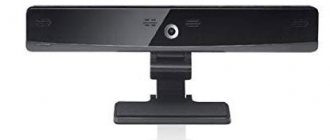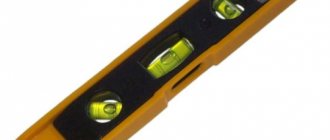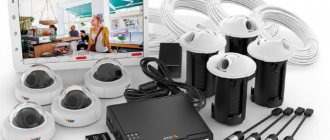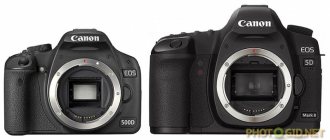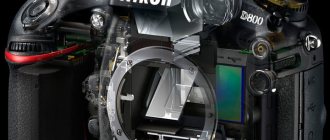Author: Alexander Starchenko
There are so many different types of CCTV cameras available today that it can be easy to become overwhelmed by the variety of choices. In order to choose the right video camera, you first need to understand for what needs you plan to use it, and also decide on the number of cameras, their technical characteristics, etc.
To make your choice easier, we wrote this article, which provides 7 main criteria for choosing a good CCTV camera based on the specific tasks.
Outdoor IP camera for video surveillance
The IP video camera transmits the image using a digital signal. Each device of this type has an IP address, with which you can synchronize with any recorder, smartphone, tablet and other devices. The IP camera connects to the Internet via an Internet cable, WI-FI or mobile 3G/4G. In order to connect the device to a PC, just install the software on the computer (included with the video camera), and you already have a simple video surveillance system.
Characteristics of an outdoor IP video camera
- The resolution of the IP video camera can exceed 12 MP (4K).
- Due to the low power consumption, the cameras are powered by an adapter or via a PoE cable.
- The method of connecting IP cameras to a personal computer differs, depending on the number of connected devices. For one camera, connect via the LAN interface of the network card; for two or more devices, connect a switch to the LAN, connect an IP camera to the switch, then make a network connection, assigning each camera a new network address.
Multi-streaming
- Any IP camera broadcasts at least two streams. One stream (main) goes for recording, the second (substream) of lower resolution goes to the monitor. Most IP devices support three streams: for recording, for monitor, and for mobile device. But there are models that support up to 10 threads.
Corridor mode
- There are IP cameras that support vertical shooting, 9:16 instead of the usual 16:9. This shooting mode is best suited for long narrow corridors and tunnels. If the “corridor mode” is not included by the manufacturer, it will not be possible to install it programmatically.
Signal transmission methods
- Wired . Provides stable and high-speed data transmission via cable channels, which, by the way, have length restrictions depending on the type of cable. So, for twisted pair - 100 m, for coaxial cable 500 m, 100 km - for optical fiber.
- Wireless . Wireless data transfer is provided by a built-in Wi-Fi module or 3G/4G module. Range is limited by interference due to physical barriers and electromagnetic interference.
- Hybrid. To improve a particular data transmission, a hybrid system is often used. This is a combination of wired and wireless methods.
Lens type
- Monofocal. The lens is in one position, there is no way to change the viewing angle.
- Variofocal. The viewing angle can be changed manually.
- Transfocal. You can change the viewing angle remotely and manually.
Connection type
- Wired connection. A wired connection is made via an Internet cable via an RJ-45 connector.
- Wireless connection . Control and data transfer via Wi-Fi, GSM, 3G/4G.
Advantages of an IP video camera
- For better detail, there are cameras larger than 12 MP.
- Possibility of panoramic and high-speed (up to 50 frames/sec) shooting.
- By connecting to a recorder or server, you can simultaneously connect many more devices compared to analog cameras.
- The POE system allows you to transmit video and power over a single cable.
- Possibility of analytical shooting (for example, notifying the operator about the detection of the desired object in a crowd of people, triggering the activation of an alarm, and much more).
Disadvantages of an IP video camera
- Difficulty configuring multiple devices at the same time.
- Dependency on Internet connection.
- The signal from the IP video camera may be interrupted and delayed.
What is the difference between IP and AHD video surveillance?
Are these 2 different standards between which there are no significant differences when it comes to domestic use? for example, video surveillance for home and cottage, car or warehouse. But if, for example, you have the task of deep analytics and connecting to a server, then only IP cameras will cope with this task.
These are tasks such as, for example, installing a camera at the entrance to a plant, connecting it to a server, entering a list of license plate numbers of plant employees into special software, and programming the barrier so that it opens only when a car from the list arrives. I will add here that the cost of such a solution, taking into account the server, software and all components, usually costs several hundred thousand rubles, which also emphasizes its non-domestic use.
The advantages of IP cameras are that their shooting quality is a little better in terms of detail, but at the same time they cost a little more. The advantages of AHD cameras are a more favorable price, the same functions and capabilities in terms of household use from motion sensors to viewing from a phone, and good shooting quality, provided that we are talking about a high-quality Brand.
And one more difference between these two standards that you need to know about is the cable. IP video surveillance is twisted pair, AHD is coaxial cable. I’ll add that now you can also connect AHD cameras via twisted pair cable using special twisted pair adapters. This is convenient in cases where, for example, you installed a twisted pair cable in your home, but then decided to install a more budget-friendly AHD video surveillance system.
On many forums dedicated to video surveillance systems you can find advice that IP video surveillance is more difficult to install and configure due to the need to register IP addresses. But for more than 3 years now, ISON has solved this problem by offering its customers ready-made video surveillance systems with EASY INSTAL technology, which come with a full range of all necessary settings and presets, a formatted hard drive and a ready-made cable with connectors. Those. When choosing such a system, you don’t need to configure or crimp anything, just take everything out of the box and plug it into a power outlet. I will add that all AHD systems of the same brand also come with the same technology.
If you want to delve more deeply into the differences between IP and AHD video surveillance, we recommend watching our video IP or AHD video surveillance 9 differences. I would like to add that I would recommend that you consider both IP and AHD options for video surveillance systems when purchasing.
Outdoor analogue video surveillance camera
If you compare an analog and digital IP camera, then in terms of picture quality the difference will not be noticeable (if we are talking about quality up to Full HD inclusive).
The operating principle of an analog camera is to convert the light flux, which is focused in a CCD matrix, into an electrical signal. The signal can be output to a monitor or a regular TV. An analog system can include several devices with simultaneous broadcasting on the screen. For this purpose, as well as for video recording, a DVR is used.
Characteristics of an analogue street video surveillance camera
Analog CCTV camera formats:
CVBS format. Nobody produces devices with this format anymore, but you can use the old cable route for other formats.
Analog CCTV camera formats.
- The resolution of analog cameras is measured not in pixels, but in TVL (television lines):
Low quality: 380-420 TVL. Average quality: 560-600 TVL. High quality : 1000 or more TVL.
Advantages
- One cable (coaxial) transmits not only audio and video files, but also power.
- The price is lower than for IP cameras.
- Data transfer without delay.
- Transfer video files without loss of quality up to 1200 m.
- Cyber-protected, since it is impossible to intercept the stream; only the DVR is connected to the network.
Flaws
- Dependence of the analog system on the recorder.
- The presence of noise (unwanted signals that mask the useful component of the signal).
- Maximum resolution for analog systems is up to 8 MP.
PTZ camera for outdoor video surveillance
Using a PTZ video camera, you can significantly increase the area of video surveillance, and using the built-in ZOOM system, you can see even the smallest details of the object being monitored. In addition to everything, the rotating mechanism can significantly save the budget by reducing the number of non-rotating video cameras.
PTZ cameras have a couple of features:
- Rotary mechanism.
- There is a program to compensate for possible image distortions caused by camera movement.
Characteristics of PTZ cameras for street video surveillance
- Zoom mode . The zoom ratio of the ZOOM mode ranges from 3 to 36 times.
- PTZ cameras are divided into: High-speed. With manual control, the rotation speed of the device reaches 300 degrees/sec. High speed. When driving automatically, the turning speed is 600 degrees/sec.
- The tilt angle is up to 180°.
- The rotation angle in some models can be 360°.
- Positioning accuracy For example, if for a camera with a positioning accuracy of 0.5-0.4 ° you use a module with a 37-x zoom lens, and bring the object as close as possible from a distance of 300 m, an error of 0.5 ° will give an error with a predetermined point of about 2 m!
- The turning mechanism can be: Gear transmission. A rather outdated mechanism that is rarely used today. The rotation speed in the horizontal plane of the camera with a gear mechanism is 240 degrees/sec. This speed is enough for normal observation; for shooting manually, in alarm mode, this speed may no longer be enough. Positioning accuracy 0.5-0.4 ° . Belting. Rotation speed in the horizontal plane up to 600 degrees/sec. Positioning accuracy 0.1 ° . Direct drive from an electric motor . The turning speed can significantly exceed 600 degrees/sec. Positioning accuracy 0.05 ° . Direct drive significantly increases the cost of the device.
Advantages
- Immeasurably greater visibility compared to non-rotating cameras.
- The route of the video camera can be programmed, but the operator can remotely take control of the camera at any time.
- Can be used not only as a means of observation, but also as a means of tracking.
Flaws
- Despite all the advantages of the rotating mechanism, such cameras are still not without “dead zones”.
- The need for frequent maintenance of the rotating mechanism.
What resolution should I choose: 2, 4, 5 or 8 megapixels and how much do they differ from each other?
And also what is HD, FULL HD, 2K and 4K?
Today there are many camera options from 2 to 8 megapixels. There is no exact answer to the question of how many megapixels to choose for a private home, for monitoring a car or, for example, for a warehouse, because In this matter, everything depends on the budget.
If your budget allows, then take 8 megapixel cameras, today these are the best cameras and the picture will be as clear as possible, if it does not allow, then the average price option is 5 megapixels, budget options are from 2 to 4 megapixels. Links with prices for options from all 3 categories will be in the description.
Here it is worth noting the above point regarding matrices; it is important to look not only at the resolution in megapixels but also at the matrix with the lens, because Buying an 8 megapixel camera with a low-quality sensor does not mean buying a good camera.
We are also often asked whether cameras, for example 4 and 5 megapixels, differ much in quality. The answer is simple: 1 megapixel is 1 million pixels, i.e. 1 million dots on the screen, i.e. in cameras with 5 megapixels, there are 1 million more pixels and this is 20%, i.e. a 5 megapixel camera will see 20% better than a 4 megapixel camera, respectively, an 8 megapixel camera will see 2 times better than a 4 megapixel camera, of course, provided that we compare cameras with the same matrices, lenses and the same brand.
The difference between 4 and 5 megapixel CCTV cameras is 20%
Here we will answer the question of what HD, FULL HD, 2K and 4K are. These are terms to define essentially the same resolution.
HD is the equivalent of 1 megapixel, this resolution has already been discontinued by almost all brands as outdated and low-quality video surveillance;
FULL HD is 2 megapixels, a budget option;
2K is 3 to 5 megapixels;
4K is an 8 megapixel premium option;
Outdoor CCTV camera with night vision
For round-the-clock monitoring of the territory, the need for high-quality video shooting at night logically arises, and in such a manifestation of nature when there is neither the moon nor any extraneous light sources in the sky, i.e. in pitch darkness. Video cameras with IR illumination come to the rescue. But simply having IR illumination does not guarantee high-quality video shooting at night. Some rules must be followed.
Characteristics of outdoor night surveillance camera
- Availability of IR illumination. When choosing a video camera with IR illumination, be sure to consider the following parameters: Illumination angle . Ideally, the backlight angle and the viewing angle of the video camera should match, then there will be no bright spot of illumination in the middle of the frame and dark spots along the edges. Range. This parameter of a night video camera is determined by the power of the device. The longer the IR illumination range, the more power will be required to power the device.
- Supply voltage. Depending on the power, the device can be powered from a 220 V network, an adapter or from a built-in battery.
- Power. IR illuminators can have different powers, from several units to several tens of watts. The more powerful the IR illuminator, the brighter and further it shines, but it also consumes significantly more energy.
- Light source. Incandescent lamps with special light filters, gas-discharge lamps and IR diodes can be used. IR diodes are more economical and have a longer service life.
- Wavelength . The most common diodes used in IR cameras are those with a wavelength of 790-950 nm (nanometer). The maximum sensitivity of human vision is up to 800 nm, absolute invisibility is 930 nm. Based on this, you can select a camera that is invisible to the human eye at night, thereby hiding the device from intruders. Also, the wavelength affects the area of application: 790-830 nm – used in IR spotlights for video surveillance over significant distances. 850-900 nm is the most common wavelength range for IR cameras. They have a sufficient detection range, and the radiation is almost invisible. 930-950 NM – used for covert video recording at short and medium distances.
- Radiation range . Short range. Up to 15 m, radiation angle 180°. It is used mainly in premises, financial institutions, and in places where high-quality and discreet video recording is needed. Medium range. Up to 60 m , radiation angle 120-160°. For not very large areas. High range. Up to 300 m, radiation angle 20-60°. Has a narrow beam of IR radiation. Used for video recording of night roads and long corridors.
- Day/night mode. The best solution for night photography would be a camera that can automatically switch from color to black and white. The fact is that at night a black and white camera takes better pictures.
- Sensitivity. It is measured in lux (Lx). It is believed that the lower the value, the worse the camera will produce a high-quality image in worse conditions. The highest photosensitivity is 0.0003 Lux. For night photography on a full moon, 0.1 lux is enough; for a moonless night, 0.005 lux is needed.
- The IR illumination source can be built into the video camera, or it can be separate, in the form of a spotlight.
- ICR filter. Cuts off the infrared spectrum in the daytime, preventing blur and distortion of the picture.
Advantages
- The ability in some cameras to independently switch from color mode during the day to black and white mode at night.
- With the right IR illumination, you can see everything perfectly, regardless of the presence of the moon or extraneous light sources.
Flaws
- Limited resource of IR diodes (20-50 thousand hours).
- Snow, rain, and flying insects greatly interfere with video shooting.
- The heat generated from IR diodes can damage equipment if there is no cooling.
Criteria affecting image quality
Contrary to popular belief, a large number of megapixels is not a determining factor for good image quality, but is only one of the elements that ensure it. Of course, there is definitely a difference in picture quality between standard analog and IP, and it is quite significant, but speaking of the modern market and the race of manufacturers for megapixels, before choosing between 2 and 8 megapixels, you should think carefully, because often good IP camera with 2MP resolution for 10 thousand rubles. gives approximately the same quality as a more expensive one with higher values of this parameter.
There's also almost no noticeable difference between 720p and 1080p, despite twice the number of pixels. In addition, when increasing the resolution, parameters such as camera sensor sensitivity and wide dynamic range (WDR) capability may suffer, which also affect the quality of the resulting image.
Camera sensitivity and lighting conditions
Camera sensitivity plays a big role in 24-hour video surveillance. The higher its sensitivity, the better the image quality and the more opportunities for shooting in twilight and darkness.
Nowadays, almost all cameras are equipped with IR illumination, which makes it possible to conduct video surveillance even in complete darkness. Also, if necessary, you can equip the camera with an additional infrared spotlight, which differ in range and illumination power, and viewing angle.
Camera sensitivity refers to the minimum amount of light (light level) at which the camera can “see” what is happening. The sensitivity of a video surveillance camera is usually measured in units of illumination - lux. As an example, we give a small table with approximate values of lighting units typical for certain places and conditions.
When choosing a video camera, be sure to look at the specifications for what lighting conditions it is suitable for, and select it to suit your needs, having first measured the level of illumination in the place of intended installation using a lux meter. For round-the-clock operation, you will need a camera with a sensitivity of at least 0.01 lux.
In most cases, when installing cameras outdoors, the lighting will constantly change throughout the day. In order to obtain the same picture in such changing conditions (without glare in bright sun or dark image in unexpectedly bad weather), it is necessary to clarify that the camera has automatic adjustment of the lens opening - aperture. By closing or opening the aperture in automatic mode, such cameras maintain the amount of light entering the matrix within constant limits, which eliminates the appearance of overexposed or dark images under constantly changing weather conditions and time of day. Therefore, before choosing an outdoor CCTV camera, be sure to check the fact that it has automatic iris adjustment.
Wide dynamic range available - WDR
Thanks to the presence of WDR technology in CCTV cameras, it has become possible to obtain a “uniform” image in conditions of large differences in the light levels of various objects in the frame. For example, a person is facing the camera, and is illuminated from behind by bright sunlight at dawn or sunset - a conventional camera will adjust to the light level of the background, thereby darkening the person's face, or it will adjust the aperture, adjusting to the light of the face, and in this case the background will remain heavily overexposed. A device that supports wide dynamic range will allow you to get mostly the same level of illumination for both the face and the background, so all the details will remain visible and there will be no deep shadows or overexposed areas.
WDR action example
Recently, WDR technology has begun to be used much more often. If previously wide dynamic range was used only in premium devices, now, thanks to the emergence of inexpensive sensors that support this function, it has begun to be implemented in inexpensive cameras. But don’t be fooled by the presence of support for this parameter in the camera’s description - true WDR is still used only in expensive cameras, in most budget cameras - only its semblance, described by the manufacturer in confusing terms, and “wrapped in an attractive package.”
Color or black and white camera?
Updating information! For the most part, today all video surveillance cameras are produced in color, with the ability to switch to black and white mode at night, so the story about the choice between b/w and color in this part of the article has lost its relevance.
When choosing a camera for video surveillance, you need to decide whether in your particular case the capabilities of a monochrome camera are enough, or do you still need a color image?
The advantages of black and white cameras, first of all, include their low price compared to color models. Also, monochrome cameras under poor lighting conditions are able to produce a higher quality image without noise, while the image from a color camera under the same conditions will be noticeably “noisy”. However, manufacturers took this fact into account and began to produce cameras that shoot in color during the day, and when darkness falls, they automatically switch to monochrome mode.
The main disadvantage of black-and-white cameras is that they work only in monochrome mode, while color cameras are capable of transmitting more information about the object of observation - this can be attributed to their main advantage.
The disadvantage of color cameras is their higher price compared to monochrome ones.
Day/night mode and a few words about IR illumination
Camera with automatic color/monochrome mode switching and powerful IR spotlights Falcon Eye FE-IS 91/100 MLN Patrol. Price ~ 9-10 thousand rubles.
Thus, if you plan to conduct video surveillance both day and night, and want to receive information about all the details of what is happening, including color, choose camera models with day/night modes, which automatically switch to monochrome mode when darkness falls. A necessary point when choosing cameras for night video surveillance is the presence of infrared illumination, which is completely invisible to the human eye, but allows the device to monitor even in complete darkness.
The operating distance of IR illumination varies between 5-50 meters, but with the use of powerful IR illuminators it can reach longer distances. The backlight quality may vary from camera to camera. There are cases when the angle of illumination does not coincide with the viewing angle of the camera lens, and a bright, overexposed spot forms in the center of the frame. In some cameras, the power of infrared illumination can be adjusted depending on what is happening in the frame, thereby eliminating excessive illumination of the subject and the appearance of flare in the frame. Therefore, when choosing a camera for 24-hour surveillance, it is necessary to take these features into account.
Downward trend in prices
Today, in a competitive race, most manufacturers deliberately reduce the price of their equipment in order to stimulate demand and weed out competitors. Of course, this is to the benefit of the buyer, so when choosing, you should pay attention to this parameter and not look for a catch in a reduced price - today it is quite possible to buy a good camera with decent resolution and support for modern technologies for a low price.
Among other things, cameras can be wired or wireless, cased or open-framed, miniature or regular, rotating, etc., and the selection of a video surveillance camera according to its parameters will depend only on the goals and specific tasks that are planned to be solved with the help of surveillance. Also, don’t be lazy and read reviews about the camera model you are planning to buy - this way you will protect yourself from a low-quality product, or, conversely, confirm your choice in case of positive comments. Good luck in your choice, we hope that this material will be useful to you!
With this they read:
Analogue CCTV cameras vs IP: what to choose?
DVRs "Line": great opportunities at a competitive price
Ready-made video surveillance kits for various needs: selection tips with examples
IP level of protection for CCTV cameras
Did you like the article? Share with friends on social networks!
Wireless outdoor CCTV camera with Wi-Fi, GSM (SIM card), 3G/4G
The principle of operation of a wireless video camera is to transfer captured video over a Wi-Fi network to a computer or cloud server. It is possible to control the video camera remotely using a smartphone or tablet.
Characteristics of a wireless outdoor video surveillance camera
- To connect wirelessly via a WI-FI network, the video camera needs to support WI-FI standards on your equipment, usually 802.11n/a/b/g. For high-speed data transmission, the video camera and router must support the 802.11ac standard, otherwise the radio channel bandwidth for video transmission may not be enough.
- Cameras equipped with a GSM module are not designed for full video signal transmission. The SIM card installed in such a video camera allows you to send SMS and MMS to the specified phone number. Often, these cameras have motion sensors installed.
- 3G/4G cellular communications of the third and fourth generation. Depending on the standard, data transfer rates can reach up to 1 Gbit/s. A GSM module is installed that is compatible with a SIM card of any operator.
Advantages of a WI-FI camera
- Low cost of equipment.
- Possibility of remote access to management and archive of video recordings.
- There are no cables, which reduces the cost of installation and maintenance of the video camera.
- Easy setup and installation of equipment.
Disadvantages of a WI-FI camera
- There may be interference with video transmission.
- Internet access is required.
- Limited number of cameras per router.
Benefits of GSM
- SMS and MMS with detailed information are sent to the specified number.
- Due to the use of GSM, the coverage area is wider than with Wi-Fi.
- The ability to receive information without the Internet, via SMS.
Disadvantages of GSM
- Inability to stream video.
- Cellular coverage is a must.
Benefits of 3G/4G
- Possibility of remote video surveillance;
- Small dimensions allow you to hide the device.
- 3G/4G is a stable data transmission method.
Disadvantages of 3G/4G
- It is possible to suppress the signal using jammers.
— What components are needed for the operation of a video surveillance system?
And also how to organize video surveillance where there is no Internet?
There are 2 options: The standard option requires a camera, a bracket for it, fasteners, a cable with connectors, a DVR with a hard drive, and power supplies.
ISON is the No. 1 company on the market in terms of the number of ready-made video surveillance systems sold. You can view the catalog of ready-made systems on the website www.isoncom.ru in the ready-made kits section, put the number of cameras you need in the filter on the left, select the resolution you need or do not select anything to consider all the options.
You can also choose the type of camera, outdoor or indoor, or if, for example, you need a combined system where some of the cameras will be outdoor and some will be indoor, then choose any system you like and in the configurator above the buy button you can choose to replace the number of cameras you need with indoor ones.
Those. for example, you need a system for 4 cameras with three outdoor and one indoor camera, select the appropriate option and in the configurator choose to replace 1 camera with an indoor one.
Also in the same configurator, for each model of a ready-made video surveillance system, ISON offers you, if necessary, to choose replacement components. For example, you need a system for expansion. For now you want to install 4 cameras, but in the future you plan to install 3 more, in this case, choose to replace the DVR with an 8-channel one. Or you are not satisfied with the standard 1TB hard drive that provides the archive in your system, you can also choose to replace it with a 2.3, 4 or 6 terabyte drive, thereby increasing the size of the archive to several months.
Also in the configurator you can choose to replace the cable coils with longer ones.
Additionally, in the main filter you can select the option of having a viewing function from your phone, as well as 3g/4g support for objects where there is no wired Internet, the presence of a motion sensor, viewing angle, the presence of WDR technology, of course it will be real wdr, MATRIX, SHOOTING RANGE IN METERS , PRESENCE OF ZOOM, and so on.
Also, on the site in the lower left corner there is a convenient assistant, by clicking on which you will be asked to answer 10 simple questions about your property and you will immediately see all the options that suit you.
The above composition is basic, i.e. it is enough for the functioning of the video surveillance system, but there are also additional peripherals that are often purchased along with the system, for example, uninterruptible power supplies, they provide power to the system during a power outage from several minutes to several hours depending on the selected uninterruptible power supply model, mounting boxes and bases for mounting cameras.
Mounting boxes are standard plastic boxes where the camera connector is hidden from moisture. Bases for mounting cameras are a more universal device in which you can not only hide a connector but also attach a camera to it, routers for connecting the DVR to the Internet via a 3G/4G modem. If your facility does not have wired Internet, then you will separately purchase the USB modem itself; they are sold only in cell phone stores; you will also purchase a specialized router, video surveillance signs, microphones, monitors, and so on.
The second option for assembling the kit assumes the presence of only a camera with a slot for an SD card and its direct connection to the Internet. In this case, you will need a camera with a bracket, fasteners for it, an SD card, a power supply and a cable with connectors for connecting to the router. This method is suitable for small objects where 1 camera will be enough, for example, a construction site and a small archive for several days. I would also like to note that this method is considered more difficult in terms of self-installation, because requires a number of IP settings on the camera and the router to which it will connect. If you are interested in this method, be sure to watch our video “How to connect an IP camera all ways.”
Outdoor CCTV camera with recording
Today it is almost impossible to find a video surveillance system that simply broadcasts video on a monitor screen. Modern video surveillance cameras are capable of transmitting video files to a service cloud and saving them to a memory card or hard drive.
Characteristics of a street video surveillance camera with recording
- Some models have a microphone for recording video with sound.
- The video stream can be recorded: 1. To a video recorder (HDD) or cloud service (SaaS). 2. The DVR is in normal mode, but in alarm mode (set in the device settings), recording is made to a memory card. 3. Only to the memory card installed in the CCTV camera itself.
- To save space on the memory card, recording can begin after an event or action programmed in the camcorder settings.
- When using the H.264 in high quality with a resolution of 1920 x 1080 pixels and 25 frames/sec, there will be 53 GB of video in 24 hours. At a frame rate of 12.5 fps, the video volume will be half as large.
- When using the H.265 (must be supported by the camera) with a resolution of 1920 x 1080 pixels and a speed of 25 frames/sec, only 16 GB per day.
- Modern outdoor video cameras support memory cards of 128 GB, 256 GB or more.
- The device has a cyclic recording, i.e. after the space runs out on it, recording will begin for the second round, etc. This should be taken into account if you plan to save a section of video for future use.
Advantages
- Possibility of storing files in a cloud service.
- Ability to archive received video files.
- Excellent for autonomous work in the absence of the Internet or cable connection.
Flaws
- If the memory card is damaged, all files on it will disappear forever.
- It is quite a hassle to remove the memory card from the device every time the need arises.
Outdoor CCTV camera with motion sensor
The sensor is triggered when an object appears in the observed area. The sensor can easily trigger on animals; to avoid this, you need to configure the video camera sensor.
Characteristics of a street video surveillance camera with a motion sensor
Types of motion sensors
- Infrared. Triggers when an object emitting infrared rays enters the camera's field of view.
- Ultrasonic. Sends beams of ultrasonic waves, which in a calm environment return unchanged, if any object comes into the camera’s viewing angle, the intensity and frequency of the waves changes, and the sensor is triggered.
- Photoelectric. It works on the same principle as an ultrasonic sensor, only the device sends beams of light rays invisible to the eye.
- Microwave. Emits electromagnetic waves, which are analyzed by the device after reflection.
- Tomographic . Analyzes radio waves that can pass through non-metallic barriers, such as walls, without interference.
Using a motion sensor you can control the following functions:
- Turning on floodlights in the protected area.
- On some models, it is possible to receive a notification on your smartphone when the sensor is triggered.
- Turn on the warning siren and send a signal to the security console.
- Enable video recording.
- The motion sensor detects objects in two ways: Software. The sensor detector is constantly running, while all other camera functions are in sleep mode. Once the sensor detects movement, it activates the rest of the camera functions and video recording begins. The detector itself consumes little energy during operation. Hardware . The hardware motion sensor is located separately from the video camera, due to this, the method of activating the camera can be different (motion, heat, ultrasound, etc.)
Advantages
- In standby mode it consumes very little power.
- For hardware detection, the sensor can be purchased separately, depending on your needs.
- Saves space on a memory card or hard drive because it takes pictures only after the sensor is triggered.
- You can configure the motion sensor depending on the size of the object (person, animals, birds).
Flaws
- Like a security camera, a motion sensor also has blind spots that should be taken into account during installation.
- Difficulty setting up a motion sensor (it is better if the sensor is set up by a specialist).
8 tips for choosing a CCTV camera with a motion sensor If you are planning to install a CCTV camera with a motion sensor, but do not know where to start, then
What is the difference between a fixed lens and a varifocal lens and which one should you choose?
How does electronic zoom work and can it be controlled remotely?
A fixed lens is a standard lens without a zoom, while a varifocal lens is a lens with zoom capabilities.
Let's look at all the options from the most budget to the most expensive:
- The most budget option is a 3.6mm lens, its disadvantage is not the maximum viewing angle, which, depending on the matrix, will be from 60 to 100°;
- Next comes a fixed 2.8mm lens, depending on the matrix it gives a viewing angle of up to 120°. For example, in the above-mentioned ISON AIR or ISON GREKO PRO systems, there are just such lenses that give the cameras a viewing angle of 120°. This is the maximum viewing angle for street CCTV cameras; there are more cameras that only have 360° fisheye cameras, but they are very highly specialized and are only suitable for the format of shopping centers.
- Next comes a 2.8-12mm varifocal lens, which makes it possible to aim a 4x zoom, the disadvantage of such a lens is that the zoom is controlled here by a hexagon on the camera itself.
- Next comes one of the most popular lenses nowadays, electronic. This is the same variable lens, only it can be controlled remotely from a phone, tablet or computer anywhere in the world. Such lenses are supplied, for example, to cameras of the ISON GROT X, ISON KOVO PRO, ISON OZON and many others.
- Well, the most expensive are rotating PTZ lenses; in addition to on-board zoom, such cameras also rotate 355° left/right, up/down. Also, if we are talking about ISON PTZ cameras, then they come with patrol tour technology, i.e. you can set the camera to automatically rotate around your subject.
General characteristics of a street video surveillance camera
Despite the large number of differences, street video surveillance cameras have many common characteristics.
Outdoor video camera protection
- Thermal casing. Protects the video camera from high and low temperatures due to the built-in heating or cooling system.
- Hermetic casing. Protects the camera from dust, moisture, etc.
- Anti-vandal casing . Made of hard metal alloys, durable plastic, etc.
Viewing angle
The average viewing angle is 60°, which is approximately the viewing angle of the human eye.
Shooting mode
- Colored . Color mode provides high-quality images during daylight hours.
- Black and white. At night, the best image is from a black and white camera.
Type of shell
- Dome . It has the shape of a hemisphere and is attached to the ceiling or cornice. A frameless modular camera is placed inside.
- Cylindrical. As a rule, street cameras in a cylindrical body are inexpensive and compact.
- Modular. It does not have a housing; a protective casing is required for outdoor shooting.
Camera mount type
- To the ceiling.
- To Wall.
- Using a bracket. Can be mounted to the ceiling or wall. For round pillars or the corner of a building, a semicircular or triangular shaped bracket is used.
Camera power
- From the network.
- From the built-in battery , which is charged from the network.
- From the built-in battery , which is charged using solar energy.
Video camera resolution
- The camera resolution must match the number of pixels. To check this, you need to “maximum resolution” and compare it with the specified number of pixels. The resulting data should be approximately the same, or even slightly less than the specified number of pixels. For example, it is indicated that the resolution is 2688 x 1520 = 4085760, the number of matrix pixels is 2 megapixels, or 2,000,000 pixels. This suggests that the resolution is “increased” artificially, and the picture quality may not be the best.
Physical matrix size
- This is the diagonal size in inches ( 1/2.5; 1/2.8; 1/3; 1/4 ). A larger matrix has larger pixels and captures more light. The fact that larger pixels are located less closely has a positive effect; all these subtleties ultimately affect the quality of the image as a whole.
Focal length and viewing angle
The viewing angle depends on the size of the matrix and the focal length of the camera.
Table of ratios of the viewing angle (arrows indicate the viewing angle vertically and horizontally) to the focal length and matrix size.
Frame frequency
The higher the frame rate, the better the quality of the picture, but the archive also takes up much more space. It should also be taken into account that at a low frame rate, you may miss some important moment.
The optimal frame rate is 10-15 frames/sec. This frequency allows you to significantly save space on your hard drive or memory card, without much loss of quality. But for objects with increased security requirements, cameras with higher shooting speeds are undoubtedly needed.
Shutter speed
If you have blur in the frame, then the problem may also lie in the shutter speed, which can sometimes be lower than the frame rate. Hence the loss of frames and blur.
For example, the shutter is set to 1/4 sec, which means that the exposure will fire 4 times in one second (1/4+1/4+1/4+1/4=1 sec). Accordingly, the device will be able to take no more than 4 frames per second.
How not to make a mistake when choosing a street camera matrix?
This is one of the most important questions. The matrix is what is inside the camera and both the quality of shooting and the durability and correct operation depend on its quality. In an effort to make their cameras as cheap as possible, many manufacturers mislead their customers by offering to buy a 5 or 8 megapixel camera at a low price, which is due to the low quality of the matrix. Because of this, a 5 or 8 megapixel camera may actually have worse shooting quality than cameras from the 90s.
This is a current problem in the CCTV market.
We recommend choosing cameras with SONY matrices, as well as all their derivatives from Sony EXMOR to SONY EFFIO. These matrices provide the optimal price/quality ratio. Let me put it simply, that everything that is cheaper has questions about quality and reliability, and everything that is more expensive has questions about pricing and the feasibility of such a purchase.
Along with the quality of shooting, the matrix also determines the reliability of the camera. Simply put, 90% of all camera breakdowns and defects are related to the matrix. A good camera with a good sensor should last 10 years when used 24/7.
I will also note that, as in the case of counterfeits for WDR, counterfeits for SONY matrices have also appeared. Unscrupulous Chinese manufacturers noticed that cameras with SONY matrices had become one of the most popular on the world market and began to counterfeit them, which again caused indignation among consumers who bought a camera with the inscription SONY matrix, but in fact the picture was fuzzy and rippled. After which, manufacturers supplying their cameras with original matrices began to add the mark SONY original matrix to the characteristics.
If you choose ISON cameras for yourself, when selecting in the filter, check the box for SONY original matrices to see cameras with these matrices.
If you choose cameras from another brand, be sure to check with the seller about the origin of the matrices of the model you like.
A selection of manufacturers of street CCTV cameras
We present our author’s selection based on popularity among buyers on the Yandex Market, Wildberries, and Ozon trading platforms.
HiWatch
- Chinese manufacturer of analogue and IP video surveillance systems and related equipment. There is both a budget series and a PRO series of products and equipment.
PS-link
- Russian manufacturer of video surveillance devices and cameras, as well as water and household gas leakage monitoring systems. Components for the Smart Home system.
CARCAM
- Russian video surveillance systems for home, office, and car use. They produce analog and IP video surveillance cameras for outdoor and indoor use.
Dahua
- Chinese high-tech manufacturer of modern security systems. DVRs, PTZ cameras (PTZ cameras), cameras with various sensors, thermal imagers, alarms, video intercoms and much more.



